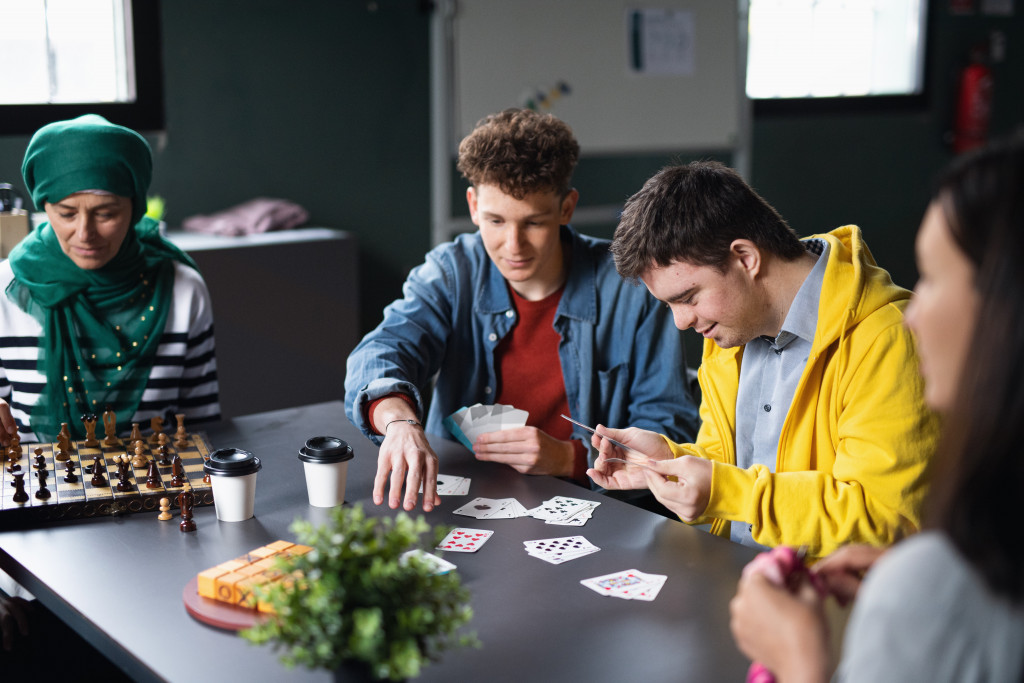- Creating an inclusive environment starts with understanding what disabilities are.
- Physical environments should be modified to make them more accessible, such as workspaces and schools.
- Flexible policies should be created to ensure those with disabilities are treated fairly and given the same opportunities.
- Engage in conversations and raise awareness about disability rights.
The rights of persons with disabilities have been a long-standing issue affecting people worldwide. Disability inclusion is important in creating a more equitable and just society, but it’s not easy to achieve. Fortunately, there are simple steps that everyone can take to create an inclusive environment for persons with disabilities in everyday life.
Understanding Disabilities
The best way to create an inclusive environment for persons with disabilities is first to understand what disabilities are and how they can affect people’s lives. This includes having an understanding of both physical and mental disabilities, as well as learning about different approaches to disability accommodations.
It is also helpful to recognize how people with disabilities might be discriminated against or excluded from certain activities due to their disability. This could be anything ranging from physical limitations that prevent someone from participating in sports or activities to psychological barriers that may keep them from feeling comfortable in social situations.

Making Changes in Every Space
Once you have a better understanding of disabilities, it’s time to make changes at home, work, and school that promote disability inclusion. This could include providing more accessible spaces and accommodations, such as making changes to the physical environment or developing resources that better cater to persons with disabilities. It is also vital to create a welcoming and inclusive atmosphere where everyone is respected, regardless of disability status.
Home
At home, this could mean making sure that your home is accessible for everyone by removing hazardous items or installing accessible features like ramps or grab bars in bathrooms. You can also create an inclusive atmosphere by ensuring everyone is included in conversations and activities. For families, the way you speak about disability also influences the way children perceive it. So, it’s important to use respectful language and talk openly about differences in ability.
Work
At work, it means creating policies that ensure employees with disabilities are treated fairly and given the same opportunities as everyone else. This could include providing flexible working hours or special accommodations like ergonomic keyboards or voice recognition software for employees who need it. Additionally, ensuring job descriptions are free of any language or requirements that would exclude people with disabilities is essential for promoting true inclusion in the workplace.
School
Finally, in schools, it means ensuring that persons with disabilities have the necessary resources to succeed. Academic institutions can achieve this by providing accessible materials, such as Braille textbooks or audio-visual aids, for people who have difficulty reading or seeing text. Additionally, it is crucial to create an inclusive environment where everyone is respected and given the opportunity to participate in activities.

Creating Awareness
Finally, the last essential step towards creating an inclusive environment for persons with disabilities is creating awareness about disability issues within your community. This could involve attending events related to disability rights and advocacy, volunteering at organizations dedicated to helping those living with disabilities, educating yourself on local laws regarding disability rights and disability insurance, or simply talking about disability issues more openly and honestly within your circles. These steps will help create a more inclusive environment where everyone feels valued and respected regardless of their abilities or circumstances.
Engaging in Conversations
Conversations can be used to raise awareness and understanding of disability rights, create better support networks for disabled individuals, and challenge any existing stereotypes or assumptions about people with disabilities. An important part of engaging in conversations about disability issues is making sure that all voices are heard – both those of disabled individuals and allies.
The goal is to create a space where dialogue can happen and to ensure everyone feels safe and respected regardless of their views. Additionally, remember to be patient and understanding when engaging in conversations about disability rights, as this is a sensitive topic for many people. By engaging in conversations and taking steps to create a more inclusive environment, everyone can help build a better world for persons with disabilities. This will not only benefit individuals living with disabilities but also help create a society that is fairer and more equitable for all.
Making changes at home and work—such as providing flexible working hours or special accommodations—is essential for promoting true inclusion in everyday life. At the same time, this also raises awareness about disability issues within our community and helps further support those with disabilities. Everyone deserves equal access and opportunity—let’s ensure we provide it!

